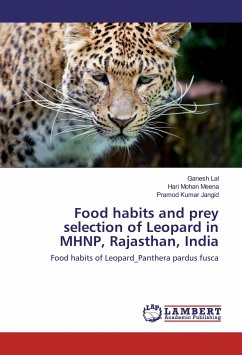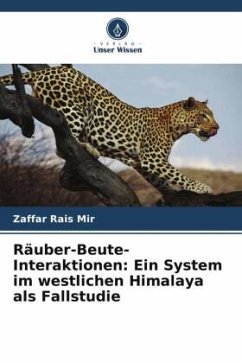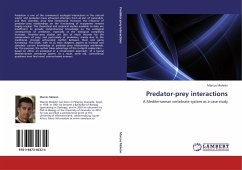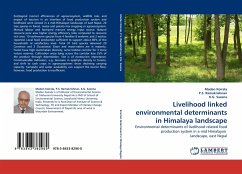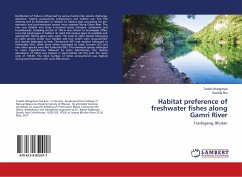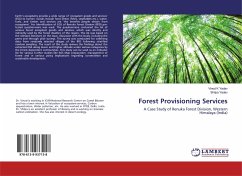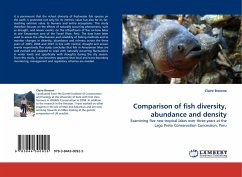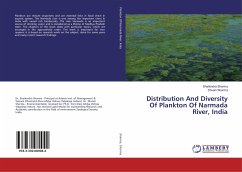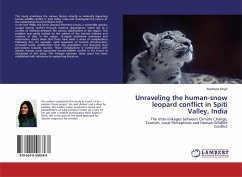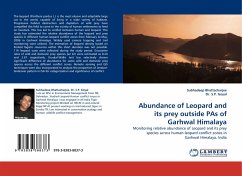
Abundance of Leopard and its prey outside PAs of Garhwal Himalaya
Monitoring relative abundance of Leopard and its prey species across human-leopard conflict zones in Garhwal Himalaya, India
Versandkostenfrei!
Versandfertig in 6-10 Tagen
32,99 €
inkl. MwSt.

PAYBACK Punkte
16 °P sammeln!
The leopard (Panthera pardus L.) is the most elusive and adaptable large cat in the world, capable of living in a wide variety of habitats. Progressive habitat destruction and depletion of wild prey have compelled this felid to come to the vicinity of human settlements to feed on livestock. This has led to conflict between human and leopard. This study has estimated the relative abundance of the leopard and prey species in different human-leopard conflict zones from February to May, 2006 in Garhwal Himalaya. Widely used camera trapping and trail monitoring were utilized. The estimation of leop...
The leopard (Panthera pardus L.) is the most elusive and adaptable large cat in the world, capable of living in a wide variety of habitats. Progressive habitat destruction and depletion of wild prey have compelled this felid to come to the vicinity of human settlements to feed on livestock. This has led to conflict between human and leopard. This study has estimated the relative abundance of the leopard and prey species in different human-leopard conflict zones from February to May, 2006 in Garhwal Himalaya. Widely used camera trapping and trail monitoring were utilized. The estimation of leopard density based on limited logistic resources within this short duration was not possible. 116 leopard scats were collected during the study period. Encounter rates of wild and domestic prey species per km were estimated as 0.24 and 2.67 respectively. Kruskal-Wallis test has selectively shown significant difference of abundance for some wild and domestic prey species across the different conflict zones. Remote sensing and GIS techniques were also incorporated to analyze the proportion of landuse- landcover pattern in ISA for categorization and significance of conflict.




